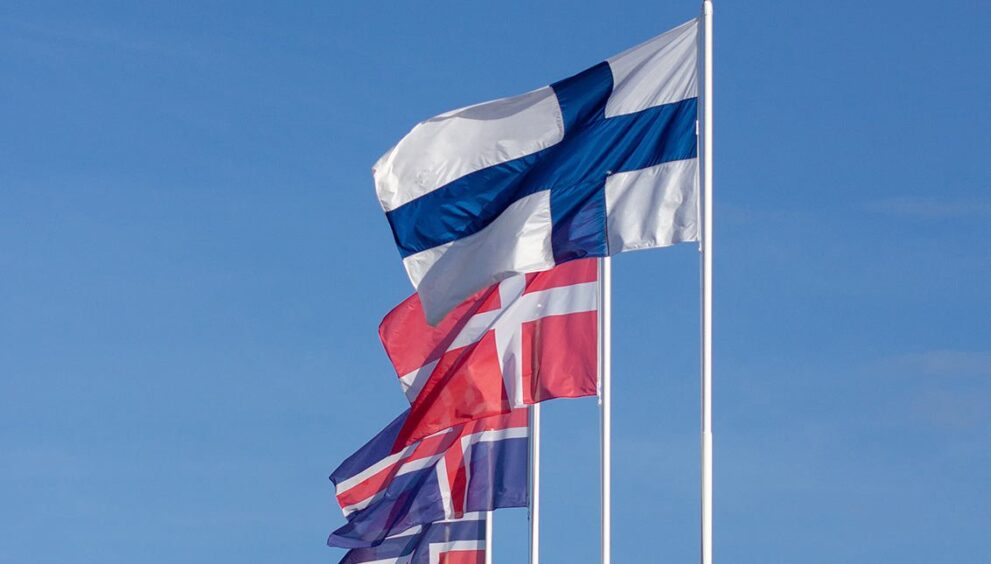Scandinavian Oil and Gas Industry: Pioneering Sustainabilit

Scandinavian Oil and Gas Industry: Pioneering Sustainability in 2025
Oslo, Norway
The oil and gas industries in Scandinavian countries—Norway, Sweden, and Denmark—are leading the charge in sustainability in 2025, leveraging advanced technologies and progressive policies to align with global net-zero goals. As key players in Europe’s energy landscape, these nations are balancing declining production, stringent environmental regulations, and ambitious low-carbon initiatives. This article explores how Scandinavian oil and gas companies are driving sustainability amid market challenges and geopolitical shifts.
Norway’s Leadership in Low-Carbon Production
Norway, Europe’s largest oil and gas producer, is prioritizing sustainability while maintaining output at 4 million barrels of oil equivalent per day (boe/d) in 2025, according to the Norwegian Petroleum Directorate. Equinor, the state-owned energy giant, is investing $3 billion in carbon capture, utilization, and storage (CCUS) projects, with the Northern Lights project sequestering 1.5 million metric tons of CO2 annually. The company’s use of AI-driven monitoring has reduced methane emissions by 8% at its Johan Sverdrup field in 2024. Despite a projected global oil surplus of 1.7 million barrels per day (b/d) by early 2026, pushing Brent crude prices from $68 per barrel in August 2025 to $50 per barrel in Q1 2026, Norway’s focus on low-carbon production strengthens its market position.
Denmark’s Transition from Fossil Fuels
Denmark is phasing out oil and gas production, with a government mandate to end North Sea extraction by 2050. In 2025, oil output is expected to decline by 5% to 80,000 b/d, with Ørsted shifting investments to offshore wind, targeting 20 gigawatts of capacity by 2030. The company is repurposing oil platforms for green hydrogen production, supported by $1 billion in government subsidies. Denmark’s focus on renewables, which power 80% of its electricity, reduces reliance on oil and gas, though LNG imports are rising by 10% in 2025 to meet industrial demand, driven by the EU’s March 2025 ban on Russian LNG re-exports.
Sweden’s Limited but Sustainable Role
Sweden, with minimal oil and gas production, focuses on sustainable refining and petrochemicals. Preem, the country’s leading refiner, is investing $500 million in 2025 to convert its Lysekil refinery to produce biofuels, targeting 2.5 million metric tons annually by 2027. The petrochemical sector, projected to drive 18–20% of global oil demand by 2040, benefits from AI-driven process optimization, reducing emissions by 7% in 2024. Sweden’s reliance on imported crude, priced at $70 per barrel in Q2 2025, underscores its focus on sustainable downstream operations amid global price volatility.
Renewable Energy Integration
Scandinavian countries are integrating renewables into oil and gas operations to cut emissions. Equinor’s Hywind Tampen project, the world’s largest floating wind farm, powers North Sea platforms with 88 MW of wind energy, reducing fossil fuel use by 10%. Denmark’s Ørsted is piloting solar-powered LNG terminals, cutting emissions by 6% in 2024. In 2025, $2 billion is being invested in renewable integration across the region, though only 40% of executives surveyed by Deloitte prioritize these efforts due to high costs and grid limitations. These initiatives align with Scandinavia’s net-zero targets, with Norway aiming for 2030 and Denmark and Sweden for 2045.
Methane Reduction and CCUS Advancements
Methane emissions reduction is a priority, with Scandinavian firms leading globally. Aker BP in Norway uses satellite-based monitoring to cut methane leaks by 9% in 2024, while Denmark’s Maersk is deploying AI-driven sensors at its gas facilities. The region’s CCUS projects are expanding, with Norway’s Sleipner field storing 1 million metric tons of CO2 annually. In 2025, $1.5 billion is invested in CCUS, supported by government incentives, though adoption is limited by high costs, with 45% of executives citing financial barriers. These technologies are critical as global LNG demand peaks at 425 billion cubic meters in 2025.
Geopolitical and Market Challenges
Geopolitical risks, including tensions in the Strait of Hormuz, handling 21% of global LNG, and the EU’s Russian LNG ban, are driving Scandinavian LNG imports up by 15% in 2025. Norway’s Equinor is capitalizing on Europe’s 23.6% LNG import surge in H1 2025, using blockchain to reduce transaction costs by 7%. The projected oil price decline pressures profitability, prompting companies to adopt digital twins, which cut maintenance costs by 10% at Aker BP’s facilities in 2024. Scandinavia’s stable regulatory environment supports investment, unlike regions facing sanctions-related disruptions.
Workforce and Community Engagement
The region’s workforce is transitioning, with automation leading to 3,000 job cuts in 2024–2025. Retraining programs, backed by $100 million in industry funds, are transitioning 2,000 workers to roles in renewables and CCUS by 2027. Community engagement is strong, with Equinor investing $10 million in education near its Norwegian fields, boosting social licenses. Women’s representation is also rising, with 25% of STEM roles held by women in 2025, supported by initiatives like Norway’s Women in Energy program.
Outlook for 2025
In 2025, Scandinavian oil and gas companies are pioneering sustainability through CCUS, methane reduction, and renewable integration. Despite market challenges from a projected oil surplus and geopolitical risks, Norway, Denmark, and Sweden are leveraging technology and policy to lead the energy transition. Their innovations will shape the industry’s sustainable future, ensuring resilience through 2030.







